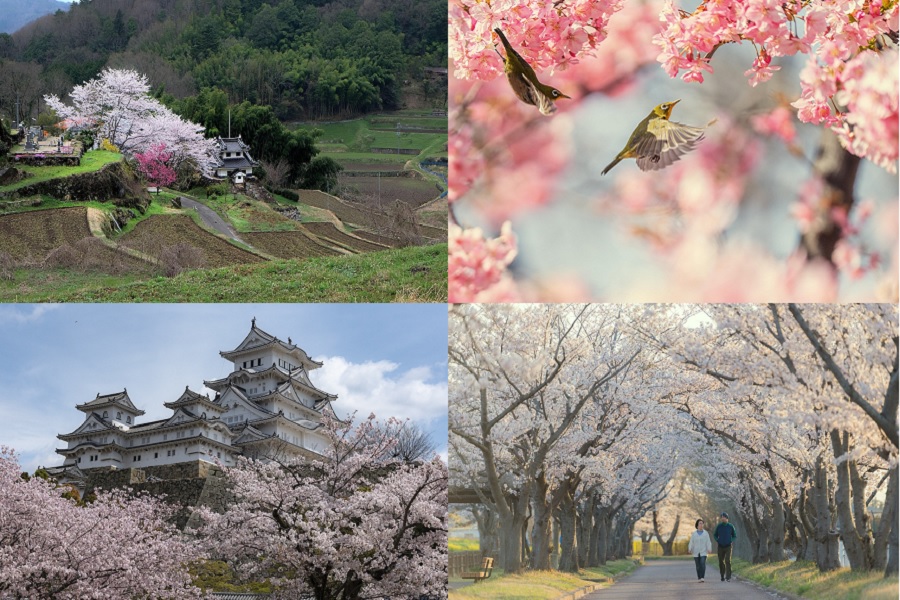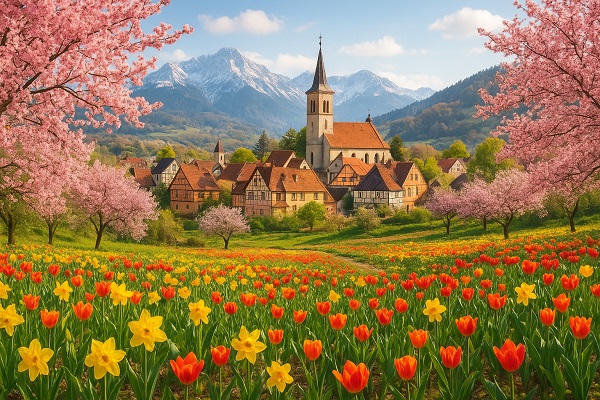Petal Pursuits in Japan: Cherry Blossoms and the Poetry of Spring

In Japan, spring is not just a season—it’s a sacred celebration of life’s fleeting beauty. As the chill of winter fades and the first blush of sakura (cherry blossoms) appears, the entire country slows down to honor nature, reflect on time, and celebrate community. Welcome to “Petal Pursuits in Japan,” where following the cherry blossom trail becomes one of the most culturally immersive and emotionally enriching travel experiences in the world.
From late March to early April, cherry blossoms bloom across Japan, beginning in the south (Kyushu) and sweeping northward to Hokkaido. The phenomenon is so beloved that the Japanese Meteorological Agency tracks bloom forecasts like weather updates, and locals plan vacations, family outings, and even weddings around it.
At the heart of this floral pilgrimage is the age-old custom of hanami—literally meaning “flower viewing.” But hanami is more than looking at flowers; it’s a communal event that brings people together under canopies of pink and white petals. Families, friends, and coworkers gather in parks, lay out picnic mats, and enjoy seasonal delicacies like sakura mochi, matcha sweets, and pink-themed bento boxes. The atmosphere is joyful, reverent, and deeply nostalgic.
Top Places to Experience Cherry Blossoms in Japan:
1. Kyoto: Where Tradition Meets Bloom
Wander through temples like Kiyomizu-dera and along the Philosopher’s Path, where falling petals float on ancient canals, creating postcard-perfect views.
2. Tokyo: Urban Sakura Magic
Join locals at Ueno Park or Shinjuku Gyoen, where the blend of high-rise backdrops and pink trees gives a unique mix of modern and timeless Japan.
3. Yoshino, Nara: A Mountainside Miracle
With over 30,000 cherry trees, Mount Yoshino offers a spiritual and panoramic sakura experience. The bloom cascades down the mountain in layers—like a wave of petals.
4. Himeji Castle: Beauty Beside History
Visit Japan’s most iconic white castle surrounded by over 1,000 sakura trees—a stunning contrast of color and culture.
5. Hirosaki, Aomori: Late Bloom Magic
In northern Japan, Hirosaki Castle hosts a late-April blossom festival with petal-filled moats, nighttime illuminations, and food stalls lining every path.
Why Cherry Blossom Tourism is More Than Just Pretty Flowers
Cherry blossoms are deeply symbolic in Japanese culture. Their brief bloom represents impermanence (mujo)—a Buddhist principle that everything is transient. To witness them is to be reminded that life is fleeting and should be cherished. For travelers, this means the journey isn’t just scenic—it’s spiritual.
Sakura season is also tied to Japan’s school and fiscal year beginnings, symbolizing renewal, hope, and new beginnings. It’s a time when locals reflect on personal growth, future dreams, and shared memories. Cultural tourism during this season isn’t just about seeing a place—it’s about feeling its soul.
Tips for Travelers During Sakura Season:
Book early—hotels and trains get sold out quickly during peak bloom.
Follow local etiquette—respect quiet zones, clean up after picnics, and avoid shaking trees.
Go beyond the crowds—explore lesser-known cherry blossom spots like Kanazawa, Kakunodate, or Nagoya.
Attend a night hanami—many parks light up the trees for evening picnics (called yozakura).




















